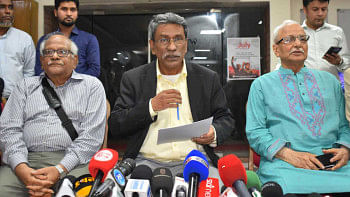Legal challenges to eradicate child labour

Child labour is a burning global issue that threatens the health and general welfare of children. It is hugely prevalent in developing countries like Bangladesh. There exists some anomaly regarding the definition of a child in Bangladeshi laws. Section 4 of the Children Act, 2013 regards any person who is under 18 years as a child. In contrast, section 2(63) of the Bangladesh Labour Act, 2006 (BLA) defines a child as someone who is below 14 years of age. Section 2(8) of the BLA considers children aged between 14 and 18 years as "adolescents".
Bangladesh has established a legal framework to curb child labour and safeguard children from the hazardous work conditions. Under section 34 of the Bangladesh Labour Act, 2006, employing children aged below 14 years or permitting a child to work in any occupation or establishment is prohibited. Under the BLA, an adolescent cannot be employed to work in any occupation unless a certificate of fitness is obtained and he carries a token containing a reference to such certificate while at work. There are also provisions which prohibits employment of adolescents in certain hazardous work.
Additionally, Bangladesh has also signed international instruments which address child labour and protection of children from hazardous work conditions. Recently this year, Bangladesh ratified the Minimum Age Convention, 1973 (No. 138), which will enter into force in Bangladesh on 22 March 2023.
Despite such a decent legal framework, Bangladesh is yet so far from making any considerable progress in curbing child labour in practice. According to National Child Labour Survey (NCLS) 1995-1996, there were about 6.3 million of child workers of age 5-14 years among 34.4 million of children. There were 4.7 million of children of age 5-14 years involved in child labour among 35.1 million of children of the same age group, as revealed by the NCLS of 2002-2003. However, subsequently, the number of child workers dropped a little – as per the NCLS of 2013, there were 3.45 million of children of age 5-17 years involved in child labour, among which 1.28 million children were in hazardous jobs. Hence, even after the enactment of laws and ratification of international instruments safeguarding children from child labour, Bangladesh is way behind in making any substantial progress in the eradication of child labour.
One of the primary reasons for the failure of the implementation of child labour laws is the lack of monitoring and enforcement of those existing laws. The fire accident at the Hashem Food factory last year, which took the life of 16 children (they went missing after the fire broke out and were not found later), demonstrates how fragile the enforcement mechanism for the laws safeguarding the children from child labour is in Bangladesh. Moreover, under section 284 of the Bangladesh Labour Act, 2006, the punishment for employing a child or adolescent in contravention of the law is only a nominal fine up to 5,000 taka. Such minimal penalty for this severe offence is itself feeding the growth of the offence of child labour and is an ineffective deterrent. Additionally, the socio-economic factors such as poverty, lack of awareness and embedded tradition, parents' feelings of insecurity about their children and lack of education of the parents with other miscellaneous factors are largely responsible for this miserable scenario of child labour in Bangladesh.
The first effective step towards eradicating the miserable scenario of child labour can be the adequate monitoring and proper enforcement of the laws prohibiting child labour. The anomaly as to the definition of a child should be addressed. Further, an enhanced fine and penal mechanism for employing children may act as a deterrent. Most importantly, the socio-economic factors as discussed above have to be addressed and dealt with; otherwise, however decent the legal framework is, it will offer nothing but failure.
The Writer is Student of Law, University of Dhaka.

 For all latest news, follow The Daily Star's Google News channel.
For all latest news, follow The Daily Star's Google News channel. 



Comments